In a town so stuffed with icons of antiquity and the Christian faith, it is difficult to recognize the place to go first. Of course, your personal pastimes will govern your choices, however there are positive websites that are nearly compulsory landmarks of Italy and pinnacle points of interest in the world, such as the Colosseum and the Pantheon.
A phrase of caution: strive to range your experiences as you discover Rome, so that you do not go to too many historical web sites or church buildings in a row. And intersperse these extra serious points of interest with a few that are in reality traveller icons: the Spanish Steps and that region all vacationers need to go to toss in their coin, the Trevi Fountain.
Rome is so huge that it can overwhelm, so even the most dedicated sightseer ought to take some time to kick again and experience la dolce vita in a park or sidewalk café. You’ll be capable to pick the pleasant locations to go to with this on hand listing of the pinnacle sights in Rome.
- The Colosseum and the Arch of Constantine
The Colosseum and the Arch of Constantine

The Colosseum and the Arch of Constantine
As the Eiffel Tower is to Paris, the silhouette of the Flavian Amphitheatre is to Rome. The greatest shape left to us by using Roman antiquity, the Colosseum nonetheless presents the mannequin for sports activities arenas – current day soccer stadium diagram is definitely primarily based on this oval Roman plan.
The constructing was once begun through Vespasian in AD 72, and after his son Titus enlarged it by way of including the fourth story, it used to be inaugurated in the 12 months AD eighty with a sequence of remarkable games. The Colosseum was once massive sufficient for theatrical performances, festivals, circuses, or games, which the Imperial Court and excessive officers watched from the lowest level, aristocratic Roman households on the second, the populace on the 1/3 and fourth.
Beside the Colosseum stands the nearly equally acquainted Arch of Constantine, a triumphal arch erected by using the Senate to honor the emperor as “liberator of the town and bringer of peace” after his victory in the warfare of the Milvian Bridge in 312. Lines are lengthy and cross slowly, so you can shop time through becoming a member of the Skip the Line: Ancient Rome and Colosseum Half-Day Walking Tour and have a educated guide, as well.
Read More: Visiting the Colosseum: Highlights, Tips & Tours
- Vatican City
Vatican City
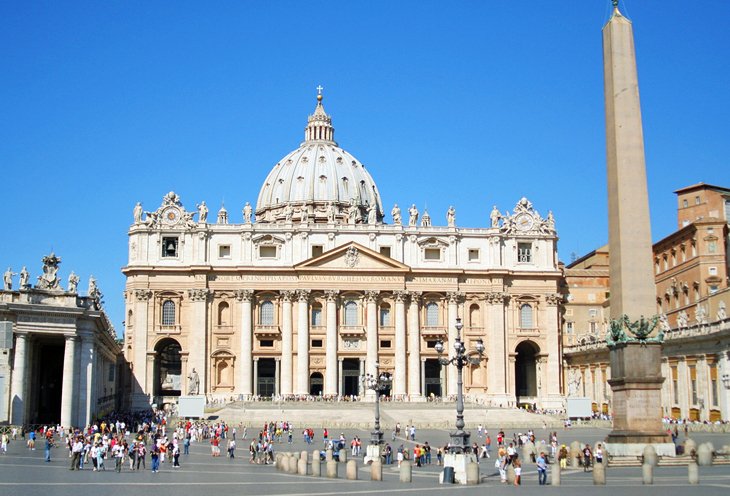
Vatican City
The Vatican is the smallest unbiased nation in the world, with an region of much less than half of a rectangular kilometer, most of it enclosed by way of the Vatican walls. Inside are the Vatican palace and gardens, St. Peter’s Basilica, and St. Peter’s Square, an region dominated by way of the Pope, supreme head of the Roman Catholic Church. This compact area presents a lot of matters to see, between its museums and the splendid basilica itself.
Inside St. Peter’s Basilica is Michelangelo’s masterpiece, Pieta, alongside with statuary and altars by using Bernini and others. The unquestioned spotlight of the Vatican museums is the Sistine Chapel, whose dazzling frescoed ceiling is Michelangelo’s most well-known work.
In the Vatican Palace are the Raphael Rooms; the Borgia Apartments; the Vatican Library, and a wide variety of museums that consist of the Picture Gallery, Museum of Secular Art, Etruscan Museum, and others. The collections you can see in these cowl the whole lot from papal coaches to 20th-century artwork reflecting spiritual themes.
Ticket strains for the Vatican’s pinnacle points of interest are tremendously long, and you can spend various hours ready in line. To keep time, buy a Skip the Line: Vatican Museums with St. Peter’s, Sistine Chapel, and Small-Group Upgrade tour in advance. This three-hour tour approves you to pass the lengthy strains and stroll straight into the museums with a educated guide. Headsets are provided, and you can pick out from countless distinct departure instances or improve to an night or small-group tour.
- The Pantheon
The Pantheon

The Pantheon
The Pantheon – the best-preserved monument of Roman antiquity – is remarkably intact for its 2000 years. This is notwithstanding the truth that Pope Gregory III eliminated the gilded bronze roof tiles, and Pope Urban VIII ordered its bronze roof stripped and melted down to solid the cover over the altar in St. Peter’s and cannons for Castel Sant’Angelo.
The Pantheon was once rebuilt after injury through hearth in AD 80, and the ensuing brickwork indicates the surprisingly excessive technical mastery of Roman builders. Its 43-meter dome, the supreme success of Roman indoors architecture, hangs suspended besides seen helps – these are properly hidden internal the partitions – and its nine-meter central opening is the building’s solely mild source.
The harmonious impact of the indoors is a end result of its proportions: the top is the identical as the diameter. Although the first Christian emperors forbade the usage of this pagan temple for worship, in 609 Pope Boniface IV devoted it to the Virgin and all the Christian martyrs, and on the grounds that then, it has come to be the burial vicinity of Italian kings (Victor Emmanuel II is in the 2d area of interest on the right) and different well-known Italians, along with the painter, Raphael.
Read More: Visiting the Pantheon in Rome: Highlights, Tips & Tours
- Roman Forum
Roman Forum
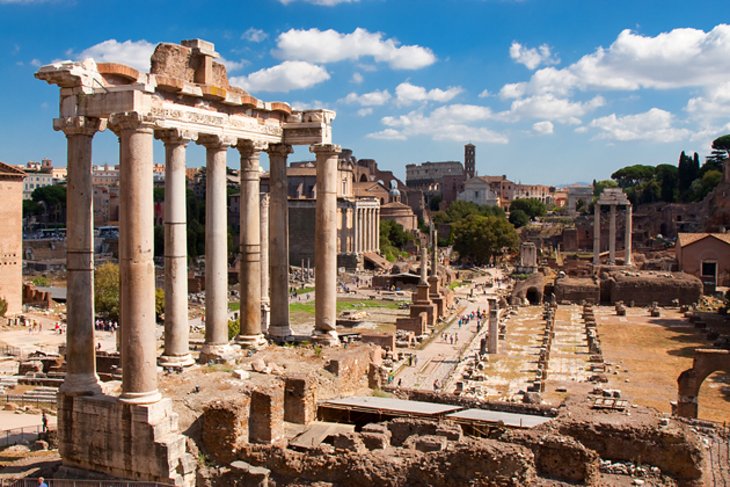
Roman Forum
Walking thru the forum, now in the center of a throbbing modern-day city, is like stepping again two millennia into the coronary heart of historical Rome. Although what survives of this core of Roman lifestyles and authorities indicates solely a small fraction of its authentic splendor, the standing and fallen columns, its triumphal arches, and stays of its partitions nevertheless impress, in particular when you think about that for centuries, the records of the Forum was once the records of the Roman Empire and of the Western world.
Roman political and spiritual lifestyles used to be founded here, alongside with the courts, markets, and assembly places. After the seventh century, the structures fell into ruin, and church buildings and fortresses had been constructed amid the historic remains. Its stones have been quarried for different constructions and it used to be no longer till the 18th and nineteenth centuries that systematic excavations added the historic structures to mild from beneath a 10-meter layer of earth and rubble.
Highlights now not to leave out are the Temple of Antoninus Pius, the Temple of Castor and Pollux, the Temple of Saturn, the Arch of Septimus Severus, the Curia, the Temple of Vesta, and the Arch of Titus.
- Trevi Fountain
Trevi Fountain
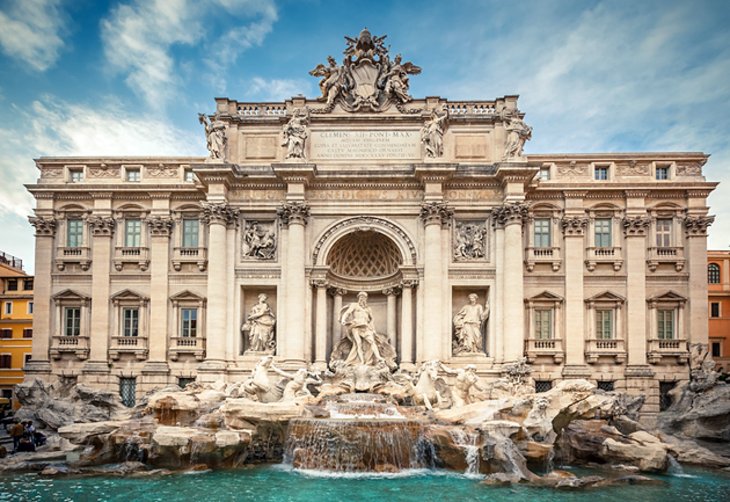
Trevi Fountain
One of the city’s most famous traveller attractions, this 17th-century masterpiece has been immortalized in movies till it is nearly a required visit. Throwing a coin (not three) into the Trevi Fountain (Fontana di Trevi) is a subculture that is supposed to guarantee your return to Rome.
Rome’s biggest fountain, Fontana di Trevi is provided via an aqueduct in the beginning developed by way of Agrippa, the remarkable artwork consumer of the first century BC, to carry water to his baths. The fountain used to be created for Pope Clement XII between 1732 and 1751 with the aid of Nicolò Salvi, and constructed towards the rear wall of the palace of the Dukes of Poli.
It depicts the sea god Oceanus (Neptune), with horses, tritons, and shells. The water swirls round the figures and the synthetic rocks, and collects in a massive basin, usually stuffed with coins.
- Vittorio Emanuele II Monument
Vittorio Emanuele II Monument
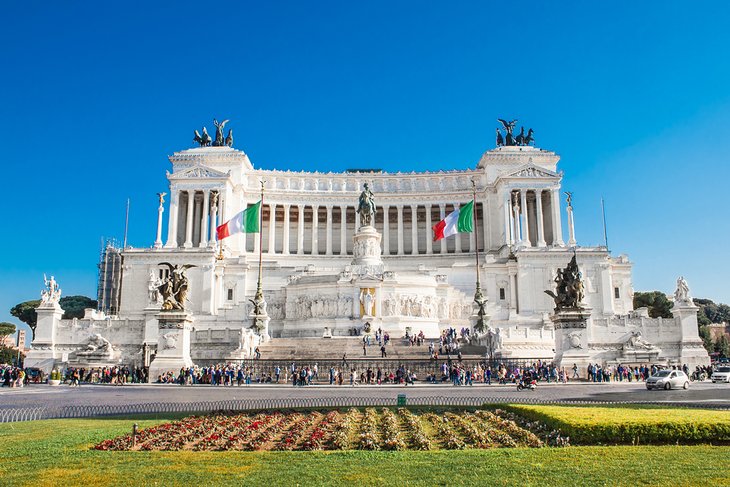
Vittorio Emanuele II Monument
It’s ironic that this grandiose monument, viewed one of the countrywide symbols of Italy, is hardly ever admired by using Romans, who liken it to a wedding ceremony cake or a massive typewriter. Like it or not, the sizable neo-classical shape crowns Capitoline Hill, symbolic middle of historic Rome, overlooking the later metropolis throughout Piazza Venezia.
Built between 1885 and 1935, it is a monument to King Vittorio Emanuele II, the first king of the unified Italy, represented right here in an equestrian statue. Italy’s the tomb of the unknown soldier is here, alongside with a museum of the Italian unification. A raise will take you to the topmost terrace for 360-degree views of Rome.
Address: Piazza Venezia, Rome
- Centro Storico & the Spanish Steps
The Spanish Steps
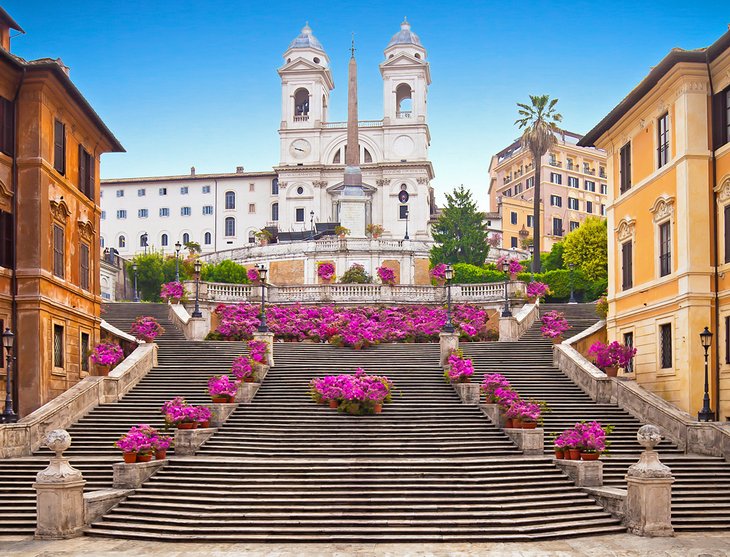
The Spanish Steps
Take a appear at a Rome visitor map, and you may see one location so crammed with matters to do that it is challenging to study the avenue names. This is the Centro Storico, the ancient core of Rome, with so many art-filled churches, resplendent palaces, and active squares that you should spend your total holiday taking walks its historical streets and lanes.
Spend some time simply to take in the neighborhood’s environment alternatively of going from one of its must-see attractions to the next. Along with Piazza Navona, the Trevi Fountain, and the Basilica of Santa Maria Maggiore, cease in much less frequent churches, such as Santa Maria del Popolo, the place you will discover works by way of Bernini and Caravaggio.
Pause at the Spanish Steps, the flight of irregular stairs and landings that lead up to the French church of Trinità dei Monti. The stairs take their identify from Piazza di Spagna, the plaza at their base and one of Rome’s most normal squares. The stairs have lengthy been a preferred hang-out of tourists.
The boat-shaped fountain at the foot of the Spanish Steps is recognised as the Barcaccia and was once created through Pietro Bernini, father of the first-rate Baroque architect Gian Lorenzo Bernini. Via Condotti, main southwest from Piazza di Spagna, is Rome’s most elegant purchasing street, the place the Caffè Greco is well-known for the artists, writers, and musicians who have frequented it.
Address: Piazza di Spagna, Rome
- Santa Maria Maggiore
Santa Maria Maggiore
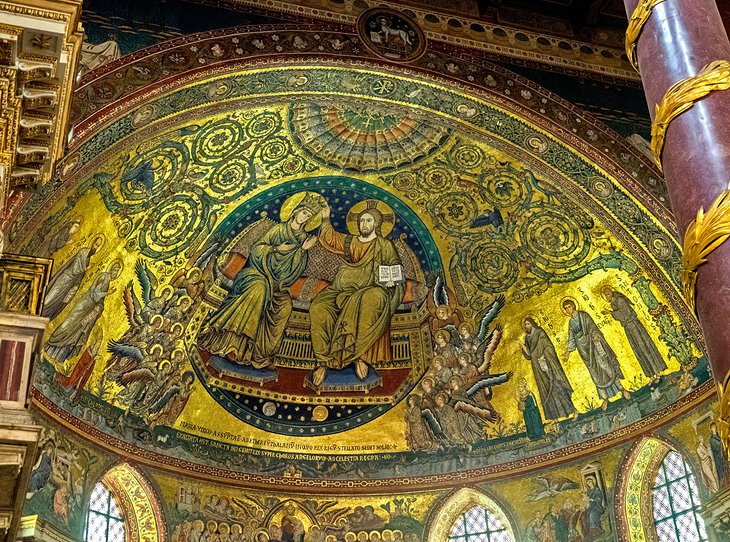
Santa Maria Maggiore
One of Rome’s most majestic churches, Santa Maria Maggiore has stood right here due to the fact that the fourth-century Pope Liberius had a imaginative and prescient of the Virgin directing him to construct a church the place snow fell the following day. Although it used to be August, snow did fall on the Esquiline hill the subsequent morning, so right here the fantastic basilica was once built.
Mass has been celebrated right here each day when you consider that the fifth century. The three aisles of its 86-meter-long indoors are separated via forty columns of marble and 4 of granite, and the apse brought in the thirteenth century is lined with mosaics of Old and New Testament themes, masterpieces of Rome’s well-known mosaic artists.
Rome’s oldest mosaics, as ancient as the fourth century, enhance the top walls, and the ground is inlaid with coloured stone in the fashion of the specialist 12th-century artisans of the Lake Como region. The first gold to attain Italy from the Americas shines on the coffered ceiling. Two popes are buried here; it is one of Rome’s 4 papal basilicas, an essential region of pilgrimage.
Address: Piazza di Santa Maria Maggiore, Rome
- Piazza Navona
Piazza Navona
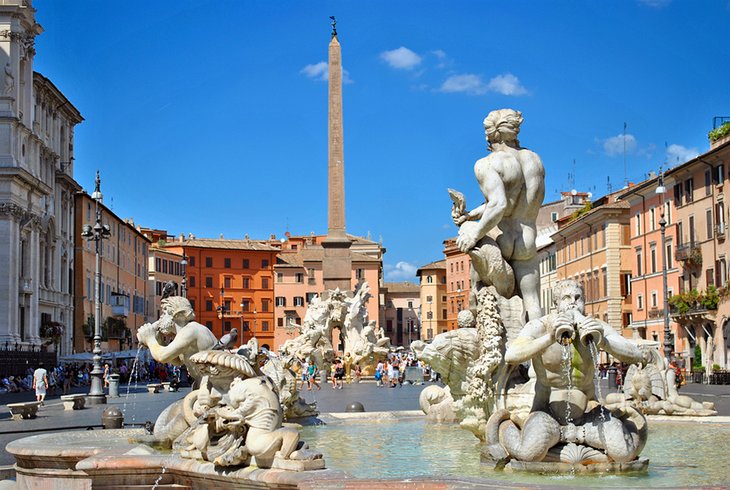
Piazza Navona
One of Rome’s most attribute Baroque squares, Piazza Navona nonetheless has the define of the Roman stadium constructed right here by way of Emperor Domitian. It was once nevertheless used for fairs and horse races all through the Middle Ages, and used to be rebuilt in the Baroque fashion via Borromini, who also designed the astounding collection of palaces and the church of Sant’Agnese, on its west side.
Its facade, campanile, and dome spotlight the way Baroque structure weaves convex and concave surfaces, gables, windows, columns, and piers into a unified design. In the crypt of Sant’Agnese are Alessandro Algardi’s 1653 The Miracle of St. Agnes and the stays of a Roman mosaic floor. Sant’Agnese supplied a mannequin for Baroque and Rococo church buildings in Italy and elsewhere.
Although Borromini designed the rectangular and its surrounding facades, it was once his archrival, Bernini, who created its centerpiece, the lovely Baroque fountain, Fontana dei Fiumi. The spirited fountain represents the 4 rivers then notion to be the greatest on every of the regarded continents, with figures personifying the Nile, Ganges, Danube, and Rio de la Plata round the giant basin, every accompanied via flora and animals of their respective regions.
The two different fountains in the rectangular are the 16th-century Fontana del Moro in the front of the Palazzo Pamphili, erected through Giacomo della Porta, and the 19th-century Fontana del Nettuno with its discern of Neptune. Today, the rectangular is stuffed with Romans, tourists, avenue artists, memento kiosks, cafés, and all through December, one of Rome’s excellent Christmas markets.
Nearby, between the Piazza and the Pantheon, the church of San Luigi dei Francesi incorporates three fundamental art work with the aid of Caravaggio from the late sixteenth century.
- Piazza del Popolo & Santa Maria del Popolo
Piazza del Popolo
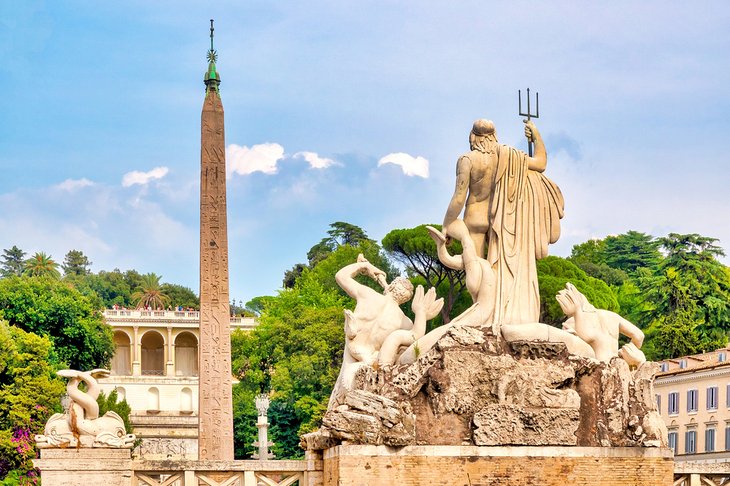
Piazza del Popolo
Symmetrically located at the apex of a triangle of streets that consist of Via Corso, Rome’s essential purchasing street, Piazza del Popolo used to be designed in the early nineteenth century as the northern entrance to the town center. At its center, the Egyptian obelisk, known as Flaminio, rises above a fountain, the place 4 white marble lions spout followers of water into 4 round travertine pools.
Facing one facet like reflect pics at both facet of Via Coorso are the twin church buildings of Santa Maria dei Miracoli and Santa Maria in Montesanto, and at the contrary aspect of the grand piazza is the Augustinian Basilica of Santa Maria del Popolo.
Inside, you will discover Pinturicchio frescoes and two tombs with the aid of Andrea Sansovino in the choir, and two stunning chapels. The Chigi Chapel was once designed by using Raphael in 1515, and the Cesari Chapel holds two vital Caravaggio paintings.
Next to the basilica, climb the steps to the Pincio Terrace for views down onto the piazza and throughout the town of Rome.
- Palatine Hill
The Stadium of Domitian on Palatine Hill
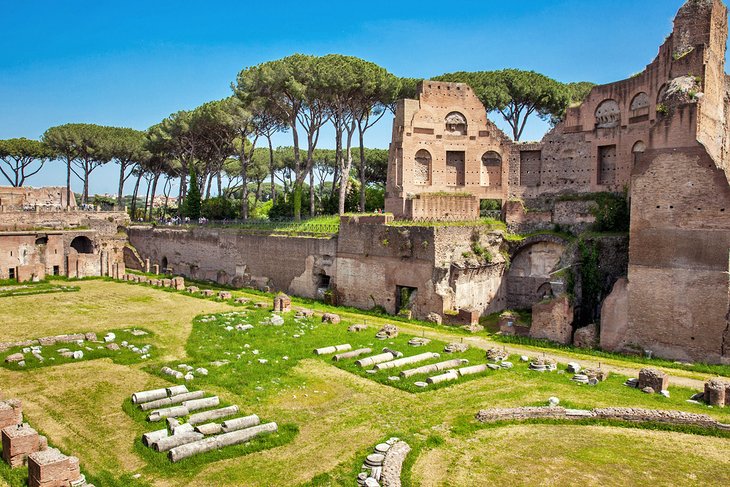
The Stadium of Domitian on Palatine Hill
Strategically set 50 meters above the Tiber, the Palatine Hill suggests proof of Rome’s earliest settlement: rock-cuttings located in the front of the Temple of Cybele exhibit human pastime as lengthy in the past as the ninth century BC. Later, this used to be the website chosen through the emperors and amazing aristocratic households for their palaces.
The Farnese Gardens have been laid out on the hill in the sixteenth century for Cardinal Alessandro Farnese, a pleasure park of terraces, pavilions, lawns, flowerbeds, trees, and fountains designed as a sort of stage-setting for social gatherings.
Highlights of the Palatine Hill are the House of Livia (Augustus’ wife), the semi-subterranean Cryptoporticus, Domus Flavia, Domus Augustana, and most imposing of all, the Baths of Septimius Severus. The Palatine Hill is a stunning location to explore, combining a park with amazing and remarkable ruins of historic Rome.
- Villa Borghese Gallery and Gardens
Borghese Gallery and Gardens
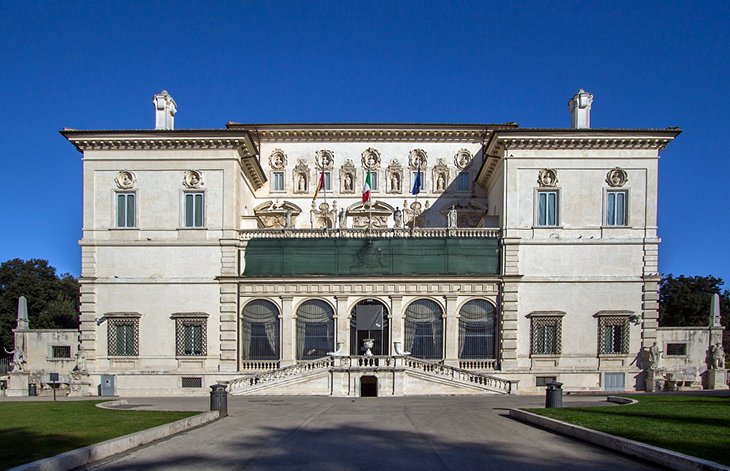
Borghese Gallery and Gardens
One of Rome’s biggest parks, the Borghese Gardens incorporate a wide variety of points of interest that consist of two museums, the most distinguished of which is the Villa Borghese. Built as a birthday party villa and to residence the Borghese artwork collection, the gallery carries paintings, sculptures, mosaics, and reliefs, most from the fifteenth to the 18th century, and encompass works through Raphael, Titian, Caravaggio, and Rubens.
Elsewhere in the park, Villa Giulia used to be constructed as a summer season dwelling for the 16th-century Pope Julius III and homes the Etruscan Museum. More villas are from the world exposition that was once held in Rome in 1911.
The park is an English-style panorama garden, with taking walks paths and ponds the place you can hire row boats. You can additionally hire bikes or a surrey to discover the park. There is a desirable zoo, Bioparco di Roma, with naturalized enclosures and a miniature path connecting its a number of sections. A wide variety of its points of interest will enchantment to children, along with playgrounds, weekend pony rides, and occasional puppet shows.
Address: Piazzale del Museo Borghese, 5
- Castel Sant’Angelo National Museum
Castel Sant’Angelo
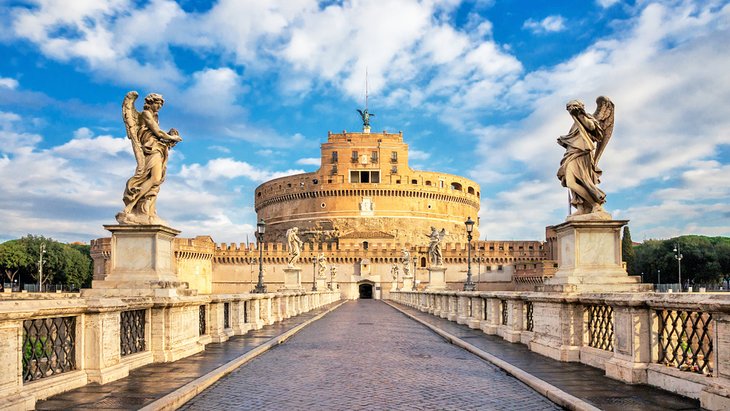
Castel Sant’Angelo
Begun in AD one hundred thirty five as a mausoleum for the Emperor Hadrian and his family, Castel Sant’Angelo is a huge drum-shaped shape overlooking the Tiber close to the Vatican. Over the millennia of its existence, Castel Sant’Angelo has been used as a papal dwelling and a fortress, and extra currently as a National Museum.
In AD 271, Emperor Aurelian took benefit of its role guarding the northern methods to the town and integrated it into his new device of partitions surrounding the city. As a bastion it blanketed the metropolis from barbarian attacks, and through the Middle Ages had emerge as a large fortress. In instances of peril, popes fled right here throughout a secret improved corridor, the Passetto di Borgo, and saved their most treasured riches in the castle’s treasury.
Visitors attain the citadel throughout a pedestrian bridge lined with statues of angels (by Bernini), and ascend to its 5 flooring on a spiral ramp. At its a range of tiers are jail cells, a massive series of weapons, and splendidly embellished papal flats blanketed in Renaissance frescoes. At the pinnacle is a terrace with gorgeous views of the city.
Address: Lungotevere Castello 50, Rome
- Capitoline Museum
Statue at the Capitoline Museum
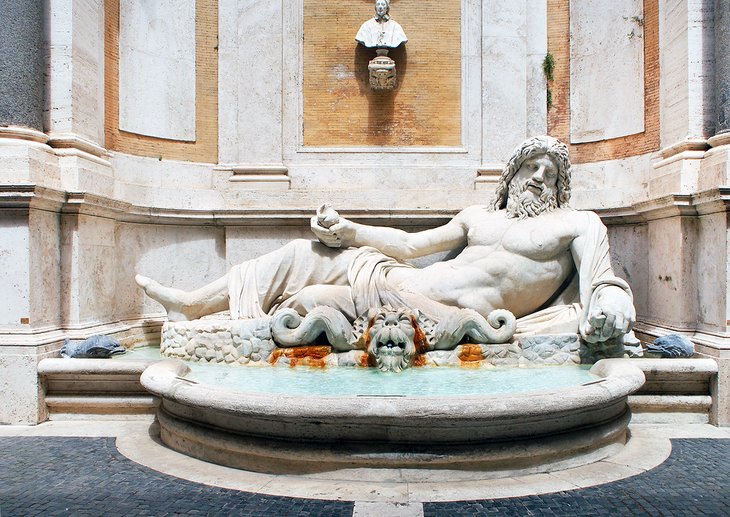
Statue at the Capitoline Museum
Two palaces on Piazza del Campidoglio residence Europe’s oldest public series of art, centered in 1471. Primarily dedicated to sculptures from throughout the historic world, the highlights of its treasures consist of the practical Hellenistic bronze Boy with a Thorn; Capitoline Venus, from a 4th-century BC authentic via Praxiteles; a 4.24-meter-tall Roman equestrian statue of Marcus Aurelius; a Roman sculpture of the Dying Gaul; and the Capitoline She-Wolf, an Etruscan work from the sixth century BC.
More “modern” sculptures encompass a head of Medusa, by way of the 17th-century Baroque sculptor Gian Lorenzo Bernini. Although the Capitoline Museum is first-class recognized for its top notch series of classical sculptures, its Capitoline Picture Gallery well-knownshows artwork via Titian, Veronese, and Rubens, alongside with Caravaggio’s compelling John the Baptist.
Address: Piazza del Campidoglio, Rome
- Baths of Caracalla
Baths of Caracalla
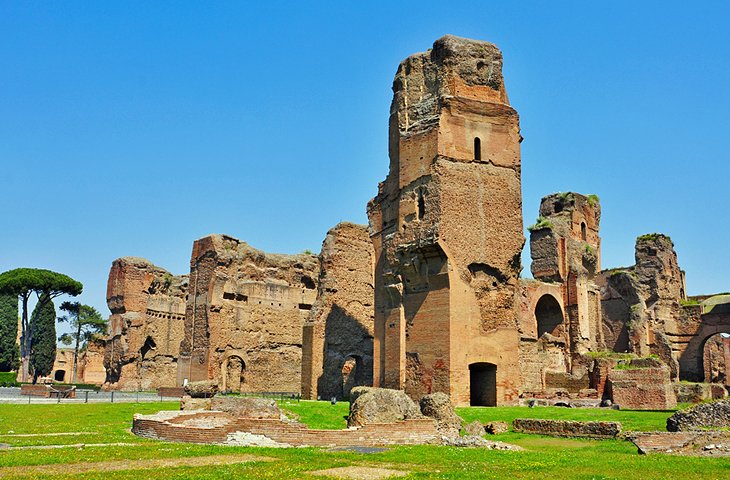
Baths of Caracalla
Completed via Caracalla in 216, these have been a whole lot extra than public baths. They had been a whole sports activities center, with warm and bloodless baths, a swimming pool, dry and steam saunas, gymnastics and sports activities facilities, social rooms, gardens, libraries, hairdressers, and shops.
The big and imposing shape protected an vicinity of 300 rectangular meters, a complicated of enormous halls whose domes and vaulting had been supported by means of massive columns and piers. It ought to accommodate 1,500 human beings at a time. The flooring and partitions have been blanketed with marbles, mosaics, and frescoes; even in spoil their elegance is nevertheless evident.
Address: Via delle Terme di Caracalla 52, Rome
- San Giovanni in Laterano (Basilica of St. John Lateran)
San Giovanni in Laterano (Basilica of St. John Lateran)
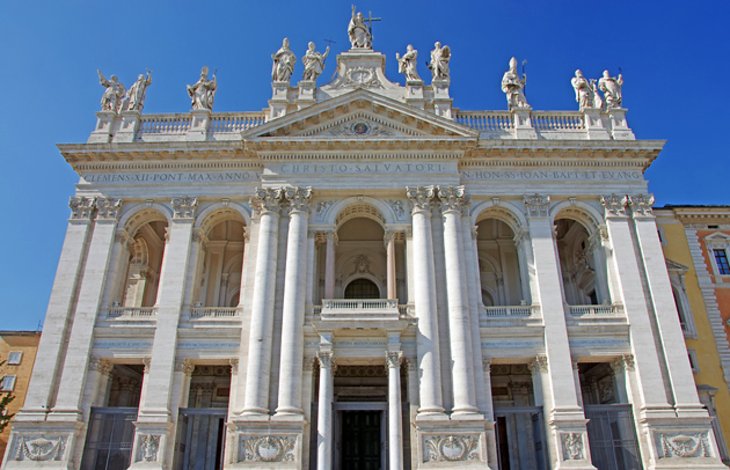
San Giovanni in Laterano (Basilica of St. John Lateran)
As you may count on for the episcopal church of the Pope, St. John Lateran is one of Rome’s most extraordinary churches. After centuries of alterations, it nevertheless retains its unique structure from the age of Constantine, when it was once built.
Its façade, by way of contrast, is a in basic terms Baroque embellishment and a first-class instance of that period. Along with the mosaics in the apse, be positive to observe the lovely 16th-century timber ceiling. If the octagonal baptistery, San Giovanni in Fonte, appears a bit familiar, it’s due to the fact it furnished the mannequin for later ones for the duration of Europe.
Built by using Constantine, it is the world’s oldest Christian baptistery. Across the piazza, in the church of the Scala Santa, is the Holy Staircase, 28 steps believed to have been delivered to Rome in the fourth century by using St. Helen, from Pilate’s palace in Jerusalem.
- The Catacombs and Via Appia Antica (Appian Way)
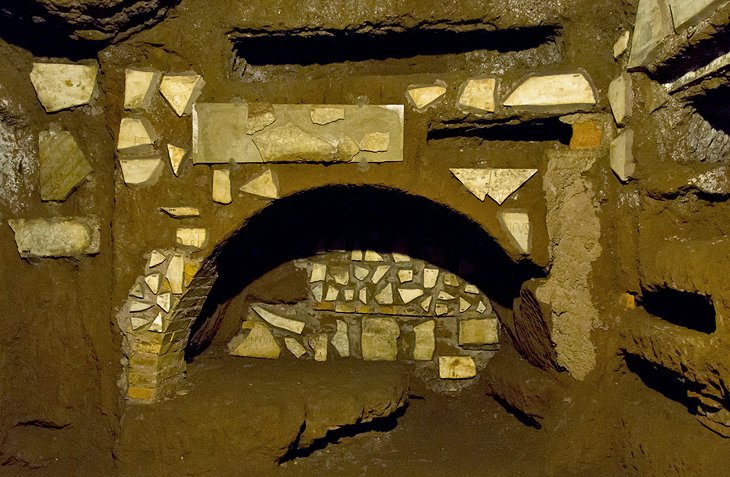
The Catacombs and Via Appia Antica (Appian Way)https://www.planetware.com/photos-large/I/italy-rome-catacombs.jpg
The Catacombs and Via Appia Antica (Appian Way) | Steve Collis / picture modified
The Catacombs of San Callisto (St. Calixtus) and San Sebastiano, each underground burial locations in the Via Appia Antica, are good sized – San Callista fills an region of 300 via four hundred meters – with problematic multi-layered networks of passages and chambers carved into the smooth tufa. In addition to the tombs, St. Calixtus has six sacramental chapels, developed between 290 and 310, with each pagan and early Christian wall paintings.
In the Papal Crypt are the tombs of most of the martyred Popes of the 0.33 century recognized by using Greek inscriptions. San Sebastiano, one of Rome’s seven pilgrimage churches, was once constructed in the fourth century on the web site of ancient cemeteries and catacombs that, along with the foundations of a Constantinian basilica, can be explored.
Tomb chambers are on various stages with first-class paintings, stucco decoration, and inscriptions courting to the first century AD. Although commemorated stays are concept to have been introduced right here for safekeeping in the course of persecutions, these have been cemeteries, no longer hiding locations for Christians.
A little west of the Via Appia Antica, no longer a ways from the catacombs of San Callisto, the Catacombs of Domitilla are the biggest and amongst the most extraordinary in Rome, with 15 kilometers of underground chambers and passages and a whole subterranean basilica.
Dedicated to the martyred saints entombed there, Nereus and Achilleus, the basilica used to be a foremost pilgrimage vacation spot till the Middle Ages. More than eighty painted tombs and a second-century fresco of The Last Supper continue to exist in its galleries.
Outside the Porta San Sebastiano, the Arch of Drusus is close to the opening of the Via Appia Antica, one of the oldest and most vital of the Roman highways, constructed round 300 BC and prolonged to the port of Brindisi about one hundred ninety BC.
Running parallel with the street are the ruins of some of the aqueducts that furnished the town with water, and amongst the cypresses alongside its aspects are stays of tombs belonging to aristocratic Roman families. The most outstanding of these is the first-century tomb of Caecilia Metella and her husband.
Address: Via Appia Antica, Rome
- Palazzo Doria Pamphilj
Palazzo Doria Pamphilj
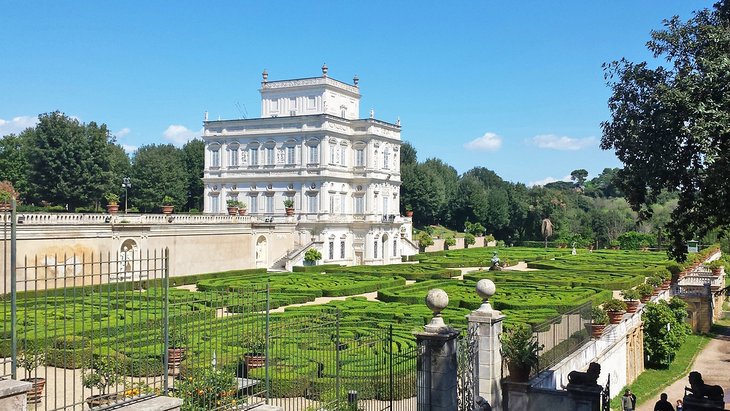
Palazzo Doria Pamphilj
Rome’s greatest personal series of artwork is displayed in the surprising Baroque galleries, kingdom rooms, and chapel of the Palazzo Doria Pamphilj. Representing works by way of European masters from the fifteenth thru the 18th centuries, the collections encompass artwork by way of Filippo Lippi, Brueghel the Elder, Correggio, and Raphael, alongside with foremost works via Caravaggio (Rest in the Flight into Egypt) and Titian (Salome with the Head of John the Baptist).
Velázquez’s Portrait of Innocent X is one of the collection’s highlights. Another photo of the identical Pope is a sculpture through Bernini. The palace itself nearly outshines its contents, with frescoed ceilings and Baroque decoration; a suitable audio information in English enlivens the tour. The gardens are beautiful, with an intricately patterned parterre with labyrinth elements.
Address: Via del Corso 305, Rome
- Church of San Clemente
Mosaic in the Church of San Clemente
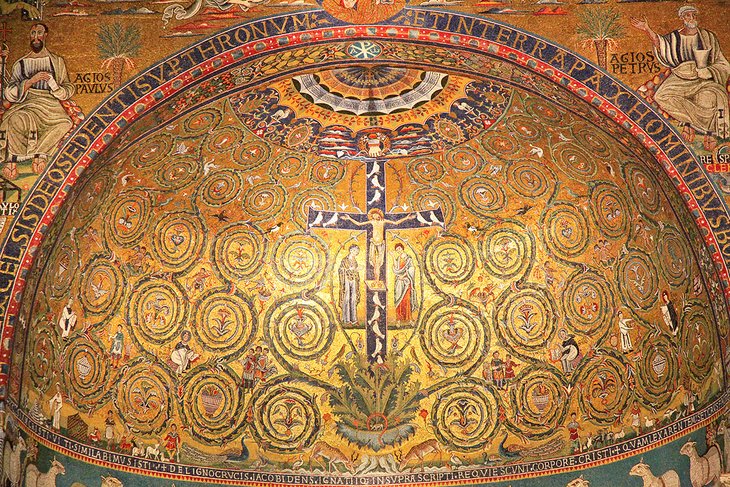
Mosaic in the Church of San Clemente
One of Rome’s oldest church buildings and with the city’s most fantastically embellished apse, protected in mosaics of Old and New Testament scenes, San Clemente has a in addition fascination: the a couple of layers of its records as every generation constructed upon the last.
You can descend from the 12th-century church into a preceding church, a 4th-century basilica with Romanesque frescoes of New Testament scenes. Below that are the excavated foundations of a Roman domestic from the 2nd century AD, with a shrine to the solar god Mithra, with a carved alleviation on the altar. From the foundations of the house, you can stroll on historical streets of this former Roman neighborhood.
But do take time to seem to be round the top church, to see the mosaics, the inlaid marble floors, and the early Renaissance frescoes by using Masolino in the St. Catherine’s Chapel.
Address: Via San Giovanni in Laterano 108, Rome
- Terme di Diocleziano (Baths of Diocletian National Museum)
Terme di Diocleziano (Baths of Diocletian National Museum)
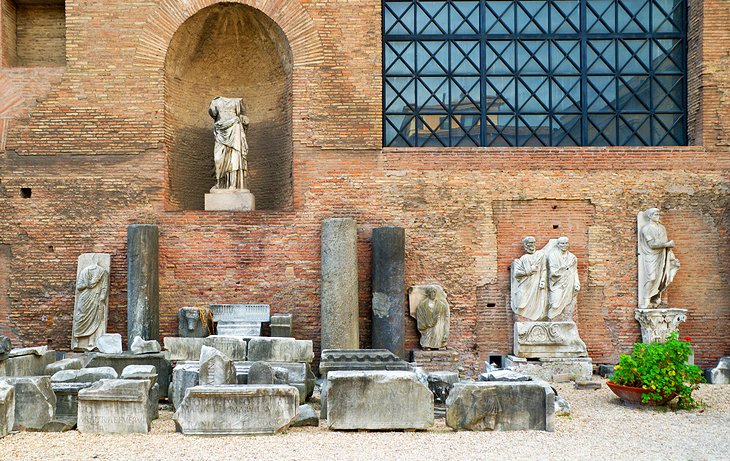
Terme di Diocleziano (Baths of Diocletian National Museum)
Diocletian’s baths have been so good sized that today, they incorporate two churches, massive components of a Carthusian monastery and a most important museum. Michelangelo used the great tepidarium (hot baths) as the shell for his church of Santa Maria degli Angeli, and the Museo Nazionale Romano, Rome’s National Museum, fills any other part with treasures of antiquity: Greek and Roman sculpture, pre-Christian and later sarcophagi, and stunning mosaics and frescoes.
The late-16th-century church of San Bernardo alle Terme was once constructed in a rotunda at the nook of the baths; its dome is like that of the Pantheon, however solely 1/2 its size.
